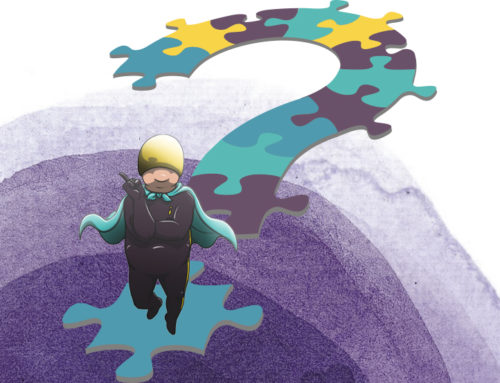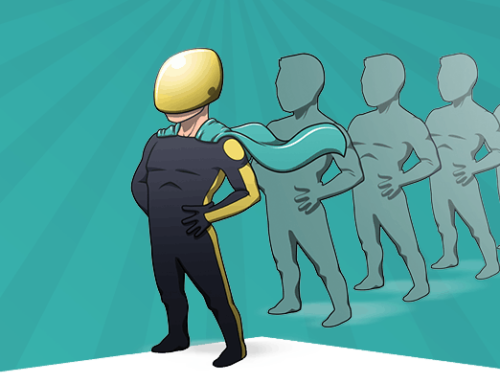Is digital transformation positive for our people? What measures or outcomes would we look for and how much does it matter? Motivation is a great place to start. How willing are we to get up and go to work each day? How much satisfaction do we derive from our jobs? It matters because work offers us a significant opportunity to do something we’re good at and be rewarded for it. What could be better for morale than that? As it happens, that there is a great deal of synergy between human drive and the drivers of digital transformation. Digital transformation simultaneously boosts motivation whilst eliminating the things that cause us frustration and disengagement.
The drivers of digital transformation create competitive advantage, better leaders, happier staff and more engaged customers.
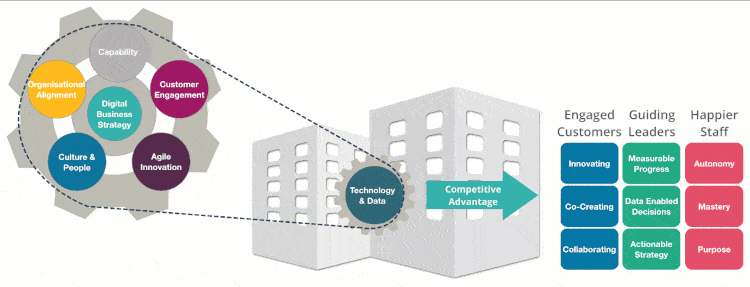
How does this help human drive? If we break it down into its component parts, all will become clear.
Daniel Pink has done some great work assimilating the data from social psychology research and has distilled the drivers of motivation into 3 things:
- Autonomy – the extent to which we are self-directed
- Mastery – developing skills and expertise
- Purpose – meaningful work and a valued role
The industrial age depended on faster, better production. Today, we prize knowledge and thought much more highly. While traditional carrot and stick methods of driving performance are effective in increasing performance when it comes to simple, mechanical tasks, cash incentives are actually counterproductive when it comes to creativity, critical reasoning, conceptual thought or problem solving.
Motivation Thieves
There is a caveat to this, however. Autonomy, mastery and purpose all help boost our motivation and drive, but there are factors that detract from this positivity. Overly onerous processes that get in the way of us being able to complete tasks, poor management, unfair compensation for our efforts, internal competition, a culture of blame or fear of failure all have a negative effect on us. These stem from our basic needs for fairness, safety and order.
We can visualise motivation like this:
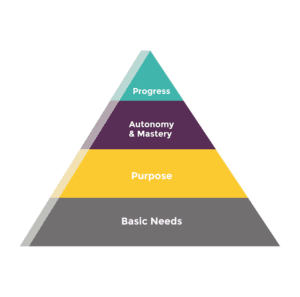
Once our basic needs are met, the positive effect of the upper layers becomes much more pronounced.
How does a digitally transformed organisation fit with our motivation?
Let’s start at the bottom. Business alignment and a culture of innovation act as barriers to the motivation thieves. When the business is aligned to its purpose and the culture supports that purpose, we are buffered from these detracting factors.
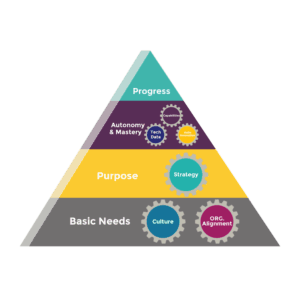
Purpose
Marrying personal purpose to organisational purpose is very motivating. Digitally transformed organisations have a clear strategic purpose. The product or service they offer creates their competitive advantage, adds value to their customers and differentiates them from their marketplace. Aligning this purpose to our personal values is very important.
We also have a desire to do work that is meaningful to us which we can find in our role. Digital businesses need lots of different talents – data scientists, writers, designers, digital experts, researchers, experimenters, technicians and much more. Leaders just have to match people to purpose.
Mastery
Mastery is about developing our skills and talents and having the opportunity to use them. Digitally transformed organisations close their people’s capability gaps by offering training or education whenever needed. Digital businesses don’t confine themselves to traditional roles either. Many base their structures on talent which is more fluid as people work across projects.
Digital innovators never stand still, they are constantly reinventing and innovating so their people are able to continually develop their skills and expertise.
Autonomy
Agile innovation gives us the opportunity to tackle difficult, strategically important obstacles or problems and challenges us to find creative, innovative solutions. How good would it feel to come up with a solution to a problem that no one else has been able to find? In digitally transformed organisations, the leaders diagnose and define the challenges and let their people find the solutions – offering a high degree of autonomy to their teams.
Rather than cash incentives, increased autonomy makes an excellent reward for people as they reach ever greater degrees of mastery.
Is digital transformation positive for our people? The answer is an emphatic yes. The drivers of digital transformation closely align to the factors that drive us to engage with our work and feel intrinsically rewarded and satisfied by it. We can be very happy workers indeed when we’re also sufficiently generously compensated for our efforts .
